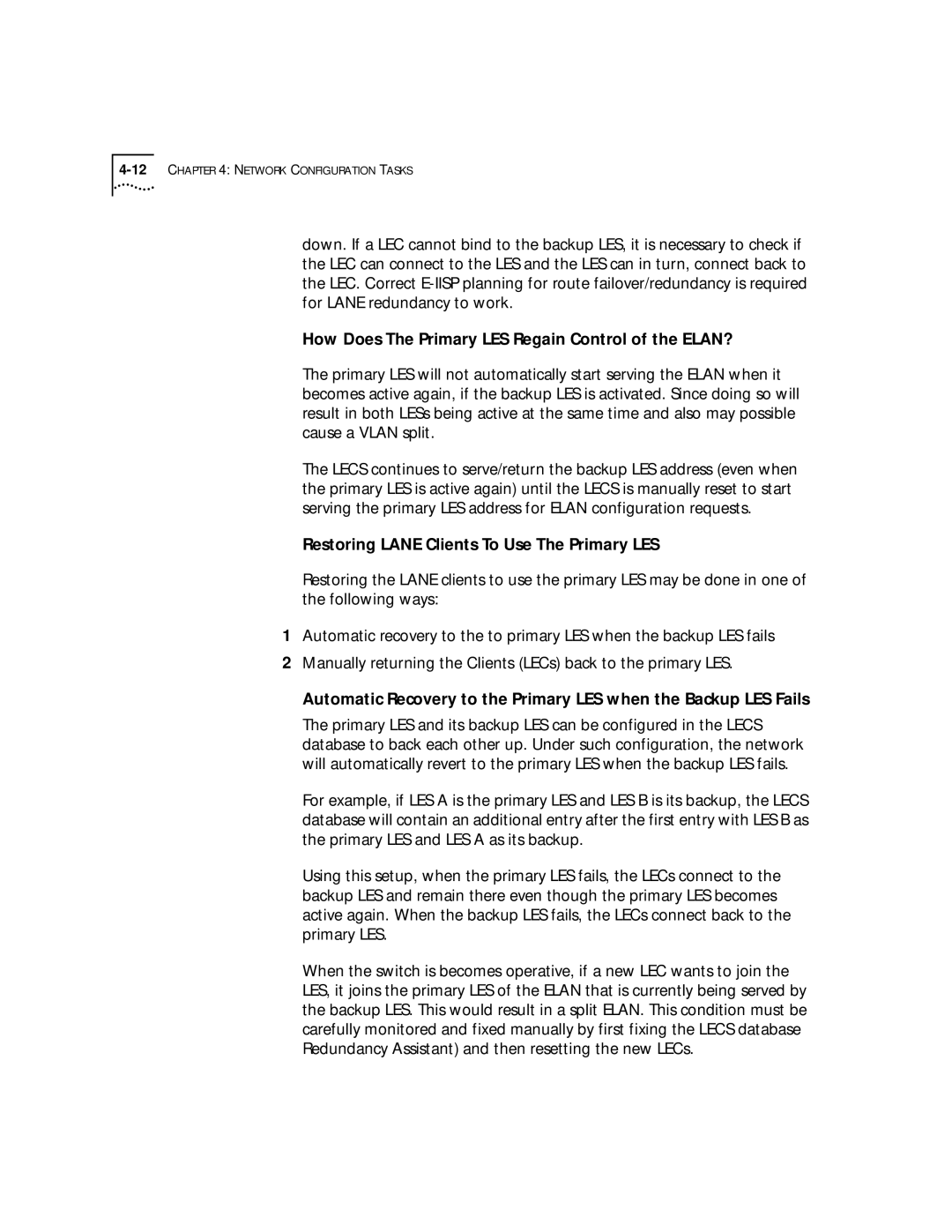down. If a LEC cannot bind to the backup LES, it is necessary to check if the LEC can connect to the LES and the LES can in turn, connect back to the LEC. Correct
How Does The Primary LES Regain Control of the ELAN?
The primary LES will not automatically start serving the ELAN when it becomes active again, if the backup LES is activated. Since doing so will result in both LESs being active at the same time and also may possible cause a VLAN split.
The LECS continues to serve/return the backup LES address (even when the primary LES is active again) until the LECS is manually reset to start serving the primary LES address for ELAN configuration requests.
Restoring LANE Clients To Use The Primary LES
Restoring the LANE clients to use the primary LES may be done in one of the following ways:
1Automatic recovery to the to primary LES when the backup LES fails
2Manually returning the Clients (LECs) back to the primary LES.
Automatic Recovery to the Primary LES when the Backup LES Fails
The primary LES and its backup LES can be configured in the LECS database to back each other up. Under such configuration, the network will automatically revert to the primary LES when the backup LES fails.
For example, if LES A is the primary LES and LES B is its backup, the LECS database will contain an additional entry after the first entry with LES B as the primary LES and LES A as its backup.
Using this setup, when the primary LES fails, the LECs connect to the backup LES and remain there even though the primary LES becomes active again. When the backup LES fails, the LECs connect back to the primary LES.
When the switch is becomes operative, if a new LEC wants to join the LES, it joins the primary LES of the ELAN that is currently being served by the backup LES. This would result in a split ELAN. This condition must be carefully monitored and fixed manually by first fixing the LECS database Redundancy Assistant) and then resetting the new LECs.
